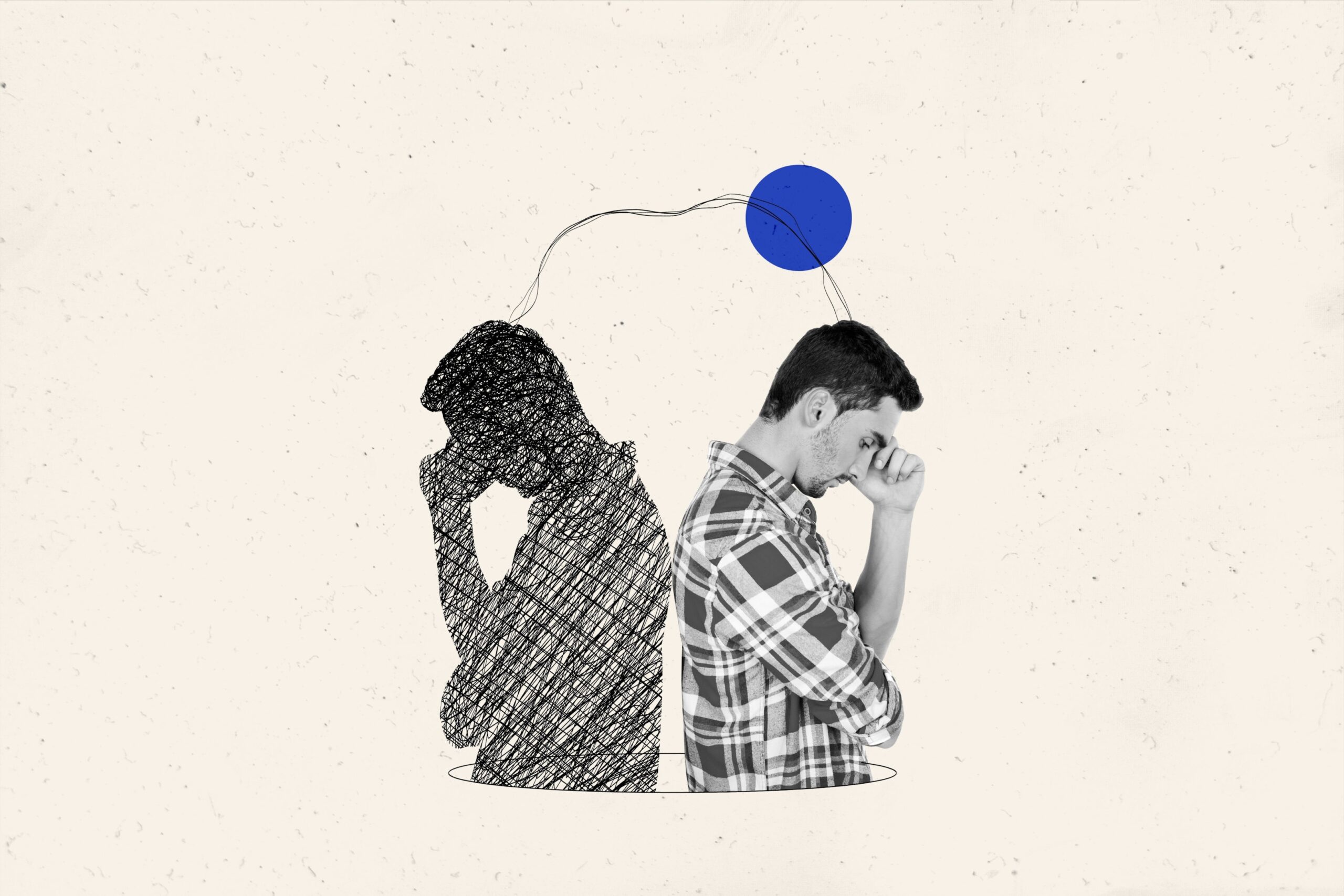Understanding What Is Bipolar Disorder: Symptoms, Causes, and Treatments


What is bipolar disorder? You may be familiar with the term, but what does it mean for those affected? Bipolar disorder is a mental illness that brings severe mood swings from manic highs to depressive lows, affecting daily function and well-being. This article delves into the crux of bipolar disorder, covering what these mood swings look like, why they happen, and how they’re treated—offering insights without inundating you with too much information all at once. We will explore how bipolar disorder is treated, emphasizing the importance of a comprehensive treatment plan that includes medications and psychotherapy.
Key Takeaways
Bipolar disorder, characterized by drastic mood swings between mania and depression, is a complex and individualized mental condition that can significantly disrupt daily living.
A multifactorial interplay of genetics, environmental factors, and stressful life events contributes to the risk of developing bipolar disorder, though no single factor guarantees its onset.
Treatment for bipolar disorder includes a personalized combination of medication management, psychotherapy, and lifestyle adjustments, with ongoing support for preventing rapid cycling and managing symptoms.
Demystifying Bipolar Disorder

Bipolar disorder, also once termed manic depression, is recognized as a mental illness marked by extreme mood swings that significantly impact an individual’s energy levels and ability to function. Imagine it as the swing of a pendulum oscillating between intense emotional peaks of mania and profound troughs of depression, with each phase bringing its distinctive intensity and challenges. For those suffering from bipolar disorder along with other mental disorders, these recurrent episodes represent more than mere fleeting fluctuations. They are deep-seated changes that can dominate their existence.
There’s considerable variation in how individuals experience life between these extreme episodes. Some may enjoy periods of relative calmness while others continuously grapple with symptomatic burdens every day, sometimes experiencing mixed episodes where elements of both highs and lows blend into a complex emotional weave. This condition casts its shadow indiscriminately over people from all walks of life, with each individual affected having their unique narrative woven by this shared thread.
The Spectrum of Bipolar Disorders: Bipolar I and Bipolar II Disorder
The spectrum of bipolar disorder encompasses a range of conditions. Bipolar I disorder sits at one extreme, characterized by the presence of at least one manic episode that can be intense enough to interfere with day-to-day activities or cause psychosis—a break from reality. Another point in this spectrum is bipolar II disorder, which involves less severe hypomanic episodes alongside at least one significant depressive episode but does not reach the peak severity of a full-blown manic episode.
The cyclothymic disorder also lies within this continuum, manifesting as repeated bouts of hypomanic and depressive symptoms over a long duration, creating an ever-shifting tapestry of mood fluctuations. Despite their differences in manifestation—through unique patterns of manic, hypomanic, and depressive episodes—all forms fall under the broad canopy referred to as bipolarity, impacting individuals’ moods and behaviors distinctively.
Mood Episodes Defined
Bipolar disorder is marked by distinct mood episodes that markedly influence an individual’s life. Manic episodes can be compared to prolonged intense sunlight, manifesting as unusually high moods or irritability. These episodes often lead to hasty actions and a surfeit of restless energy. Hypomania presents similarly but emits softer rays. Its symptoms are less severe and do not usually wreak havoc on one’s daily life.
Conversely, depressive episodes represent the darker aspect where light fades into a deep gloom for at least two weeks, characterized by profound sadness or hopelessness along with an acute disinterest in usual activities. The length and severity of these episodes differ yet consistently leave a notable mark affecting behavior and reducing energy levels so distinctly that even others take note.
Root Causes: Understanding What Triggers Bipolar Disorder

The origins of bipolar disorder are as multifaceted as its symptoms, with various intertwined factors contributing to its onset. Some of these factors include:
Genetics: Those with a family history of bipolar disorder stand at a higher threshold of risk.
Stressful life events: Trauma and other stressful experiences can act as catalysts, igniting the symptoms in those who carry the genetic vulnerability.
Environmental factors: Certain environmental factors, such as substance abuse or a chaotic home environment, can also contribute to the likelihood that someone may develop bipolar disorder.
It’s important to note that these factors do not guarantee the development of bipolar disorder, but they can increase the likelihood.
This intricate interplay between nature and nurture underscores the multifaceted roots of bipolar disorder. It’s a reminder that understanding the condition goes beyond the individual—it’s a complex narrative of biology and experience, where the whole is greater than the sum of its parts.
Identifying Symptoms of Bipolar Disorder

Recognizing the symptoms of bipolar disorder is critical for grasping its substantial influence on everyday activities. This condition morphs significantly, with manic episodes leading to severe disruptions in professional and personal relations. In contrast, depressive symptoms reflect major depressive characteristics yet are integral to the recurrent mood swings characteristic of bipolar disorder.
While some people might experience periods of stability between episodes, others endure the unstable surges associated with mixed episodes or rapid cycling—experiencing at least four occurrences within a year. This array of I’d manifestations can wreak havoc on individuals’ lives, strain interpersonal connections, and necessitate an empathetic and knowledgeable approach.
Manic Symptoms Uncovered
Bipolar disorder is characterized by manic episodes, which are typified by intense feelings of joy or irritability and heightened energy levels and often result in sleep deprivation and impulsive behavior. These phases can cause an individual to feel untouchable and impair their judgment due to exaggerated well-being or annoyance, leading to dangerous risks, including financial imprudence.
These manias carry substantial risks. When symptoms escalate, they may lead to severe manic episodes that push individuals towards psychosis characterized by disorganized thought processes, delusions, and hallucinations. Such acute conditions necessitate urgent care as the distinction between what’s real and what isn’t becomes increasingly blurred, with psychotic symptoms becoming more pronounced.
Recognizing Depressive Symptoms

The lows of bipolar disorder are epitomized by depressive episodes, where one is engulfed in profound sorrow. The symptoms include:
A sense of despair
Disinterest in almost all activities
Feelings of insignificance and fatigue
Difficulty focusing
Variations in sleep patterns and appetite
An overwhelming feeling of misery that may lead to suicidal thoughts
During these times, individuals with bipolar disorder often experience days that seem overwhelmingly complicated to conquer as the world loses its color and turns grey. Identifying these signs early on is essential because they necessitate empathy and prompt intervention to assist the individual through this darkness toward stability again.
Diagnosis: How Health Care Providers Identify Bipolar Disorder
Mental health professionals initiate the process of diagnosing bipolar disorder with a thorough physical examination, which may include blood tests to rule out other medical conditions. The evaluation continues as these experts conduct an in-depth psychological assessment, investigating any family history of mental health disorders along with the emergence, intensity, and persistence of symptoms. This approach resembles assembling a complex puzzle where each symptom and narrative adds crucial detail towards forming a comprehensive view that leads to precisely identifying bipolar disorder.
Subsequent consultations with specialists are vital for refining the diagnosis and discussing possible treatment avenues. These conversations represent collaborative efforts that can extend to involve close relations with the patient, thereby providing deeper insights into how bipolar disorders manifest in their day-to-day lives.
Treating Bipolar Disorder
Treating bipolar disorder requires the same precision, patience, and insight as creating a custom-tailored suit. Medications provide the foundational structure essential for managing symptoms—comparable to the fabric of a garment—while psychotherapy introduces personal customization that tailors the treatment plan specifically to an individual’s needs. This treatment process is an enduring pursuit of wellness and support, which involves establishing both recovery objectives and strategies for crisis intervention, which is a critical aspect of coping with such an unpredictable yet demanding condition.
The continual nature of treatment serves as the crucial stitch that holds everything together, fostering stability during inter-episode periods and acting to thwart erratic rapid cycling episodes. It is a lifelong devotion towards restoration and equilibrium. Each step made is both a testament to individual perseverance and evidence of how proper management can significantly influence outcomes in dealing with bipolar disorder.
Medication Management

The primary approach to treating bipolar disorder involves the use of medications such as mood stabilizers and antipsychotics, which are essential in managing its symptoms. Among these, olanzapine, risperidone, and aripiprazole specifically address the depressive aspects of bipolar depression. Mood-stabilizing drugs like lithium or valproate play a significant role in either preventing or reducing the intensity of mood episodes. Lithium notably starts to counteract mania within two weeks—although achieving complete symptom management may take longer.
Concurrently, substance abuse can aggravate the manifestations of bipolar disorder and diminish the effectiveness of treatment strategies. When it comes to handling depressive symptoms, common antidepressants need careful consideration due to their potential risk of initiating manic episodes when not used concurrently with mood stabilizers. This delicate situation necessitates an attentive partnership between patients and their healthcare providers for successful outcomes while navigating this complex condition characterized by varying moods.
The Role of Psychotherapy
Psychotherapy, often known as ‘talk therapy,’ serves as a valuable adjunct to medication in managing bipolar disorder by providing support, imparting knowledge, and promoting personal development. Cognitive-behavioral therapy (CBT) targets depressive episodes, specifically helping individuals identify and transform negative thought patterns and behaviors. Concurrently, treatments that focus on interpersonal relationships, like behavioral couples therapy, help improve communication skills and tackle problems that may exacerbate the symptoms of bipolar disorder.
On a broader scale, group psychoeducation and family-focused therapy widen the support network by forging communities built on understanding and shared encouragement. These approaches equip both those living with bipolar disorder and their families with better tools for coping with its challenges. This collaborative strategy draws upon the united efforts of affected individuals, their close relations, and mental health professionals alike—working collectively to instill endurance and optimism in the face of mental health adversities.
Innovative Treatments
When traditional treatments fail, innovative treatments such as electroconvulsive therapy (ECT) come into play. With its brief electrical currents applied to the scalp under anesthesia, ECT offers hope when medication and psychotherapy fail. It’s a controlled seismic shift that can reset the brain’s rhythms, relieving those entrenched in severe symptoms.
Research continues to push the boundaries, with the National Institute of Mental Health (NIMH) supporting clinical trials aimed at discovering new and effective ways to treat bipolar disorder. It’s an ever-evolving landscape of possibilities where innovation and science join forces to brighten the path to wellness.
Living with Bipolar Disorder: Lifestyle Adjustments and Support
Stabilizing life while managing bipolar disorder necessitates a combination of lifestyle changes and supportive networks. Establishing consistent sleep cycles, engaging in regular physical activity, and adhering to a nutritious diet are foundational elements that support balance in daily living. Practices like yoga and meditation serve as stress-relief tools to soften the severity of mood fluctuations. Meanwhile, streamlining life’s intricacies can diminish stress levels, leading to a more leisurely journey with bipolar disorder.
Reducing or eliminating caffeine and alcohol intake is advantageous for stabilizing both moods and sleep patterns – it’s crucial since these substances have the potential to intensify symptoms and disrupt medication efficacy.
Coping Strategies for Individuals
For those navigating the peaks and valleys of bipolar disorder, self-care, extending from diet to emotional well-being, forms the cornerstone. A holistic self-care routine includes:
A balanced diet that nourishes the body
Quality sleep that rejuvenates the mind
Regular exercise that energizes the spirit
Establishing a daily routine that provides stability and supports managing relationships and emotional health
These elements are essential for maintaining a sense of stability in the unpredictable world of bipolar disorder.
Relaxation techniques and crafting a calming environment, especially at bedtime, are crucial for individuals struggling with sleep issues related to bipolar disorder. It’s about creating a sanctuary of calm amidst the chaos, a safe space where one can recharge and regroup in preparation for the challenges and triumphs of the next day.
Living with People with Bipolar Disorder
Living with someone who has bipolar disorder can be both challenging and rewarding. Understanding the condition and providing consistent support is crucial in fostering a stable environment. Here are some strategies to help navigate this journey:
Educate Yourself: Learn about the symptoms, triggers, and treatments of bipolar disorder. Knowledge empowers you to offer better support and recognize signs of mood episodes early.
Establish Open Communication: Encourage open and honest conversations about feelings, experiences, and needs. Make sure your loved one feels heard and validated.
Set Healthy Boundaries: While offering support, it’s essential to set boundaries to protect your well-being. Ensure that you also take time for self-care and seek support when needed.
Create a Structured Environment: Consistency in daily routines can help manage mood swings. Encourage regular sleep patterns, healthy eating, and physical activity.
Be Patient and Compassionate: Mood episodes can be unpredictable. Approach each situation with patience and empathy, understanding that the disorder, not the person, is responsible for the behavior.
Encourage Treatment Adherence: Support your loved one in following their treatment plan, including taking prescribed medications and attending therapy sessions.
Recognize Your Limits: Understand that you cannot control the disorder. Encourage professional help when necessary and consider joining support groups for families and caregivers.
Living with someone who has bipolar disorder requires resilience and understanding. By fostering a supportive and stable environment, you can help your loved one manage their condition while caring for your mental health.
Family and Community Support
Support from family and the wider community acts as a vital source of empathy and strength, underscoring that one does not have to face bipolar disorder alone. Through support groups, those affected by bipolar disorder can engage with peers who truly understand their situation, exchanging personal tales and coping methods that promote feelings of unity and optimism. Specialized services like the UK’s pioneering mental health and money advice service acknowledge the complex relationship between financial stressors and mental health conditions by providing targeted assistance.
The NHS’s Patient Advice and Liaison Service (PALS) is an invaluable resource for patients seeking help along their healthcare path. They offer various services, including counsel on navigating healthcare challenges or simply being available to someone who needs empathetic listening. With such support—from relatives and friends to professional organizations—individuals living with bipolar disorder are better equipped to deal with its intricate nature.
NiHowdy’s Prescription Discount Card: A Financial Lifeline
Bipolar disorder comes with numerous hurdles, and the hefty price tag of its treatment only intensifies the burden. NiHowdy’s prescription discount card emerges as a glimmer of hope amid the daunting healthcare expenses. More than just an avenue for immediate savings at drugstores, it serves as a mechanism that enables you to earn up to 3% back in Bitcoin on each medication purchase.
Consider the future implications: These Bitcoin rewards have the potential for instantaneous monetary ease and long-term financial growth, which could help mitigate escalating healthcare costs and other substantial life expenditures. This innovative approach marries health support with fiscal ingenuity, offering an economic safety net for individuals juggling bipolar disorder care and everyday financial responsibilities.
Summary
As we conclude our in-depth look at bipolar disorder, it’s essential to acknowledge the complex nature of this mental condition that resists simple definitions and requires a sophisticated grasp. Bipolar disorder presents us with an array of clinical presentations and treatment complexities that compel us to move past prejudices, appreciating the courage and tenacity needed to endure its progression. The personal voyage through recognition and therapeutic intervention is unique, but it also benefits from the shared encouragement of loved ones, societal backing, and medical experts.
Consider this account both an inspiration for optimism and a plea for empathy, bolstered engagement, and ongoing investment into groundbreaking therapies to improve outcomes. Bear in mind that if you or someone close is affected by bipolar disorder—you are part of a community. United on this journey, there is unwavering support ready to assist you. And don’t forget practical aids such as NiHowdy’s prescription discount card can provide tangible help along your path.
Frequently Asked Questions
Can bipolar disorder be cured?
Bipolar disorder is recognized as a lifelong condition. Its symptoms can be successfully controlled through the use of medication and psychotherapy, alongside lifestyle changes and robust support systems, all contributing to an enhanced quality of life.
What’s the difference between bipolar I and bipolar II disorders?
While Bipolar I disorder is characterized by the occurrence of at least one manic episode, Bipolar II disorder is defined by the presence of at least one hypomanic and one major depressive episode, without escalating to a complete manic episode. The differentiation lies in the intensity and nature of the episodes encountered.
Does euphoria only characterize manic episodes?
Feelings of euphoria do not exclusively mark manic episodes. They can equally manifest through symptoms such as irritability, a sense of restlessness, and engagement in impulsive or hazardous activities. Without proper treatment, these episodes have the potential to escalate into psychosis.
How is bipolar disorder diagnosed?
A psychiatrist usually diagnoses bipolar disorder by conducting physical examinations, administering blood tests, performing psychological evaluations, and evaluating symptoms.
Is it safe to use antidepressants to treat bipolar disorder?
When managing bipolar disorder, it’s crucial to approach the use of antidepressants with care. These should frequently be used in tandem with a mood stabilizer to mitigate the risk of inducing manic episodes.
Collaborating closely with a healthcare provider is critical in determining the most secure and efficient strategy for treatment.


